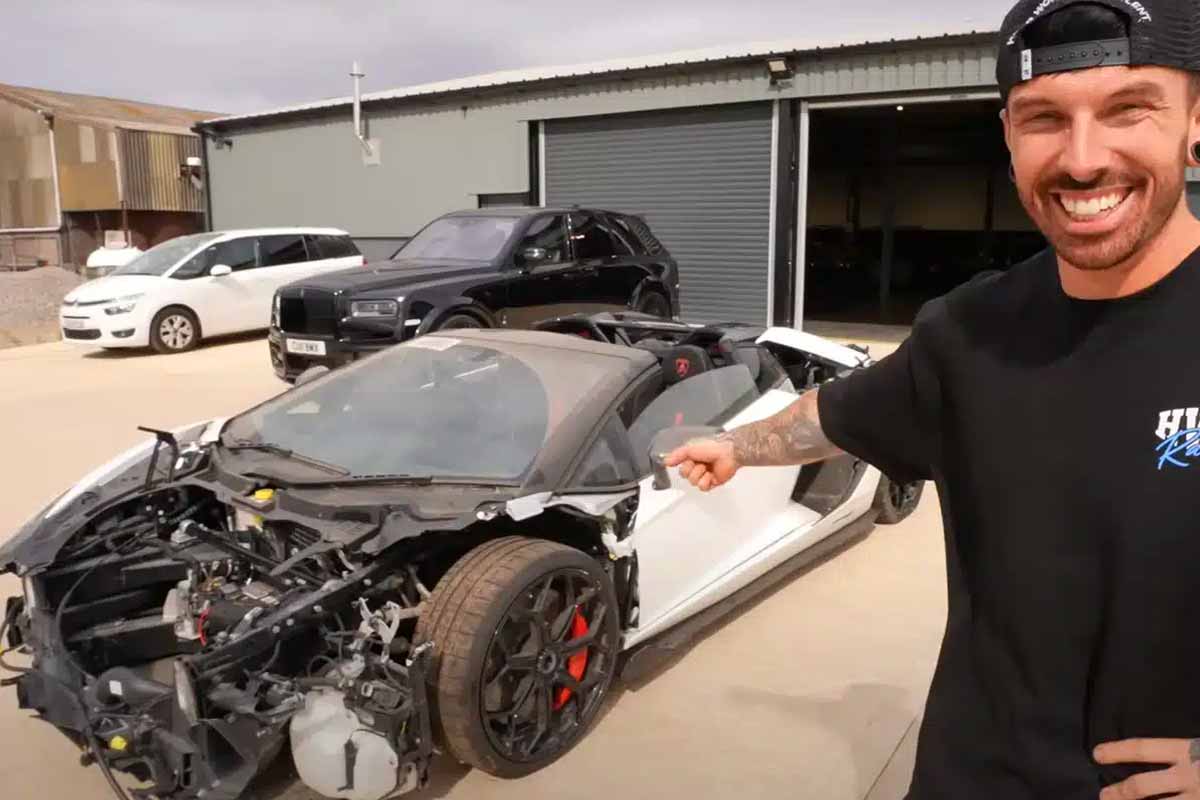
Who doesn't know Mat Armstrong? With over five million subscribers, the British YouTuber has made a specialty of unearthing wrecked supercars, fixing them up... and sharing every step of the way with (sometimes cruel) transparency for his wallet. Just a few days ago, we looked back at his Lamborghini Revuelto epicbrilliantly repaired but resold... at a loss. I promise," he said at the time, "I'll never buy another car I don't really like. Less than a month later, he was back at it again with a new Lamborghini.
From plug-in hybrid to naturally-aspirated 100 % engine
The Revuelto, with its electrified V12 and endless calculators, had disgusted him. Armstrong learned his lesson and changed his approach completely: he turned to a Aventador SVJ Roadsterthe most extreme version of the Aventador, with a 770 hp, naturally-aspirated 6.5 V12. No batteries, no electric motor: "just" a noble, raging engine, and a car that already has a cult following. Above all, the SVJ Roadster is strictly limited to 800 units, a guarantee of desirability and a more reassuring rating than a hybrid still shunned by some purists.
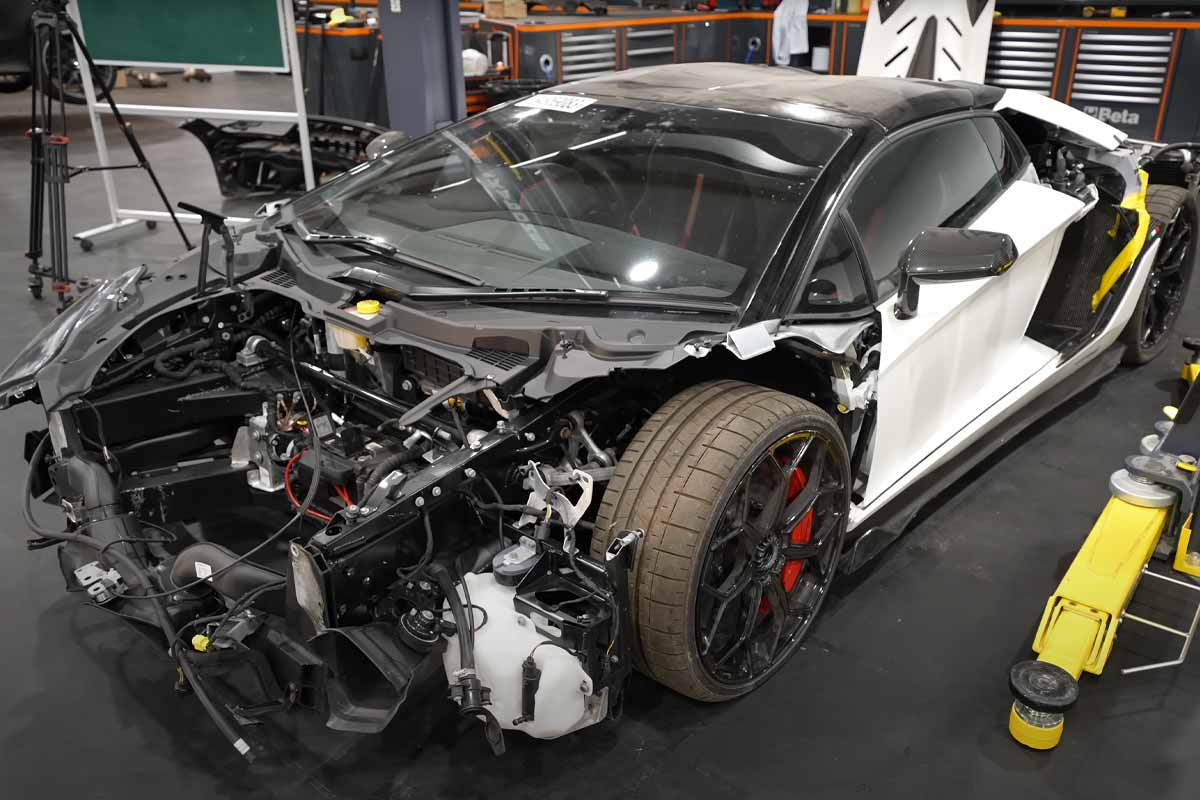
Armstrong gets his hands on a "non-running" example at auction. The photos don't paint a pretty picture: broken front end, cracked oil cooler, wiring harness and sensors reconnected "on the fly", left rear wheel embedded in the fender, cracked gearbox support, green fluid leak (gearbox hydraulic control system)... And yet, the first piece of good news on arrival: no airbag triggered. Mat is jubilant, but lucid: without oil and hydraulic pressure, the V12 will remain mute.
To wake up the car, you first have to restore pressure to the e-gear (the robotized gearbox) in order to shift into neutral. Empty battery, discharged capacitor, e-gear pump only up to... 1.2 bar: the investigation begins. After changing a seal and topping up with green hydraulic fluid, miraculously, the pump starts and the N is displayed. The SVJ finally starts up and takes its first cautious spin around the workshop.
Chassis: crumpled aluminum, unscathed carbon
The SVJ combines a carbon center cell with aluminum cradles. Visually, the hull isn't too badly damaged. The aluminum rear end, on the other hand, is much more so. An X-brace appears bulging: when removed, the mounting holes "return" to their original position. Good news: the overall alignment is saved.
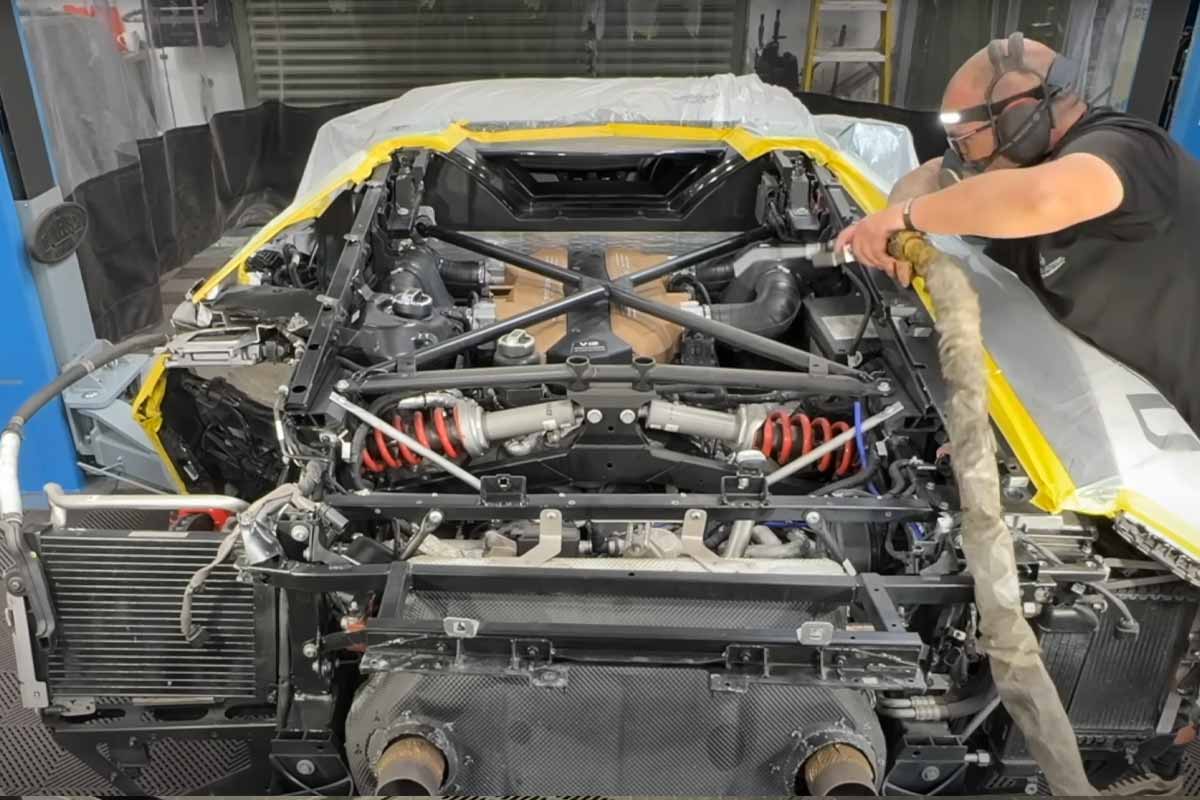
The left-hand side, on the other hand, requires a goldsmith's intervention (cutting out and grafting a new part). In the meantime, the underbody, engine compartment and running gear undergo dry-cleaning: the dust is blown away, as is surface corrosion, and the underside of the car looks presentable once more.
Mechanics: putting things back in order
The blown rear oil cooler is replaced; the bent brackets are changed; a pipe melted by hot oil is new. At the intake/exhaust, the team discovers a hastily re-installed standard assembly: lambda probes missing, flanges incomplete, screws unsuitable. Solution: upgrade with eight new probes, then install a titanium exhaust system.
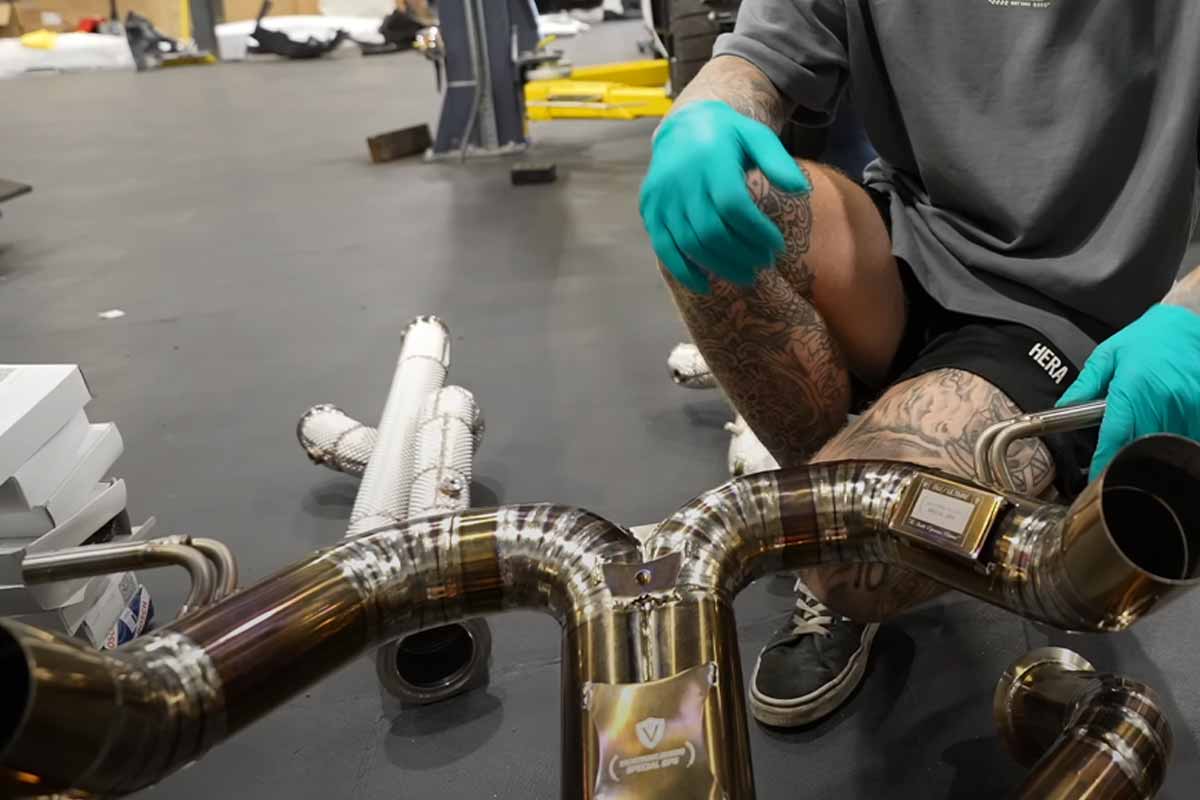
The V12 breathes, and... spits flames when revving up. The effect is as spectacular as expected, and perfectly assumed on an SVJ.
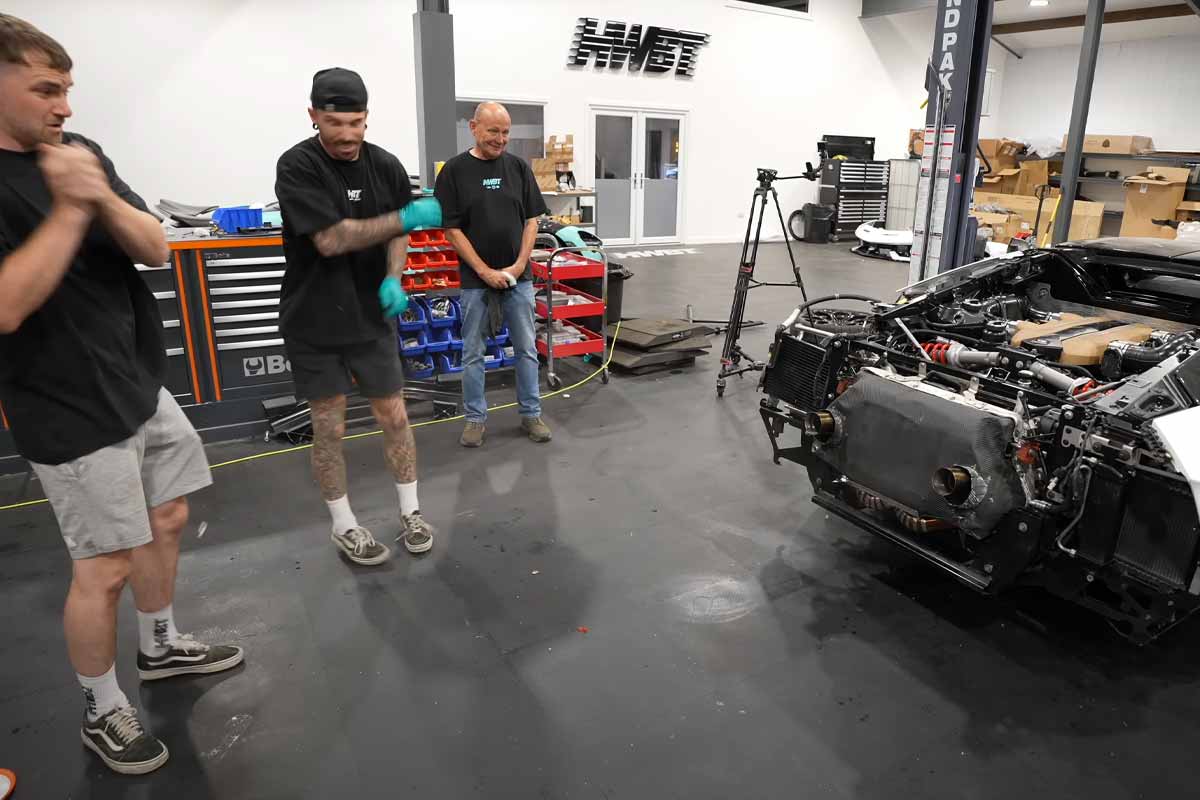
On the maintenance side, Armstrong empties the four crankcase plugs and fills with around 13 liters of new oil. Expensive "odds and ends" are also sorted out, if new, but available second-hand: headlamp (~£1,900 second-hand rather than £4,000+ new), fin mount, and miscellaneous brackets.
In the cabin, one detail quickly becomes a headache: the passenger window refuses to roll down, making it impossible to open the butterfly door without it catching on the seal. Engine OK, wiring OK... suspicions about the door module. Winning bet: box replaced (£58), everything working again.
Aborted first run
Despite the body still in pieces, the SVJ is finally running. The next logical step is a trip to the power bench to validate engine health, gear shifting and temperatures. Alas, at 100 km/h, the engine cuts out. Back to the workshop, a check of the rear steering module's power supplies and signals: everything seems to be in order, but the box itself could be at fault, and costs a five-figure sum if ordered new.
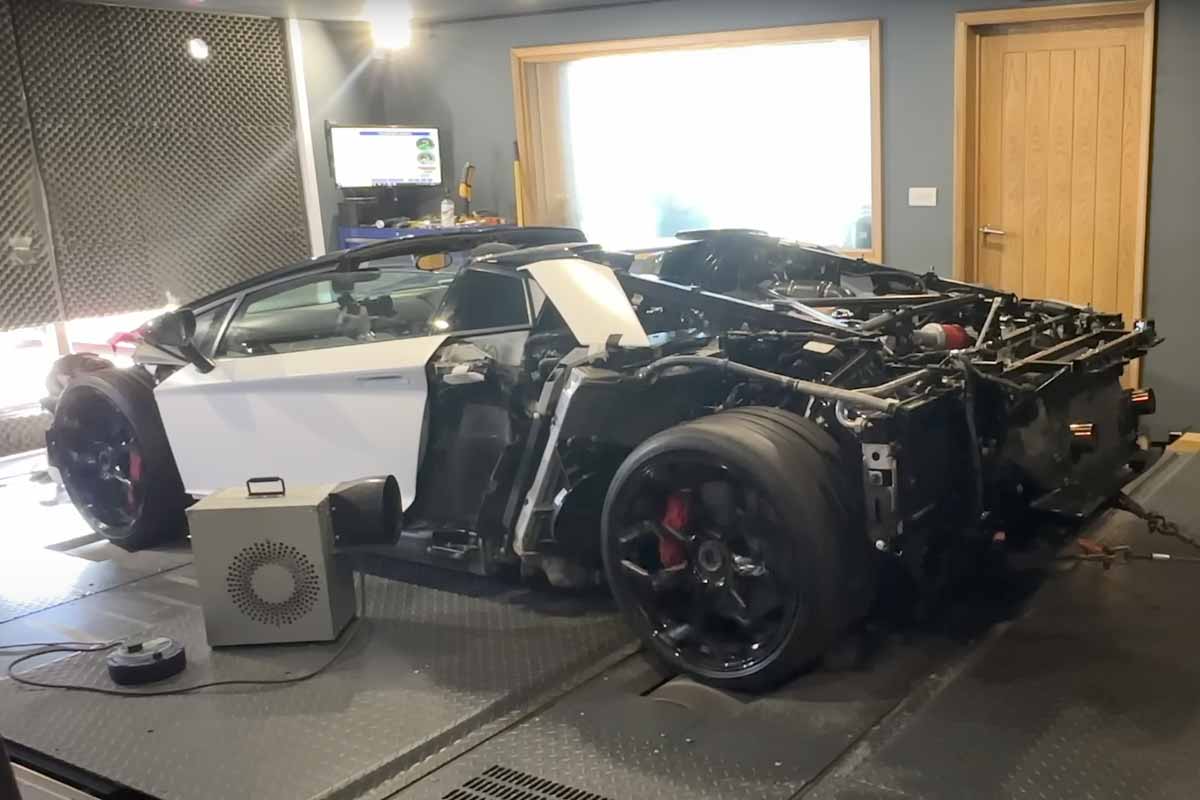
The gamble: a high entry ticket, but a car that will increase in value
Armstrong puts its figures on the board: £230,000 for the wrecked car (just over £5,000 more than the Revuelto resold), just over £11,000 worth of parts already purchased to make it roadworthy, and above all a coveted base: in the UK, SVJ Roadsters are sold for well over £500,000. The fact remains that, compared with the Revuelto (hybrid, less of a collector's item, and associated with an unfortunate first experience), the SVJ's value curve plays objectively in its favor: V12 atmo, limited series, end-of-reign icon. For once, Mat Armstrong's gamble may well reconcile pleasure and reason.
